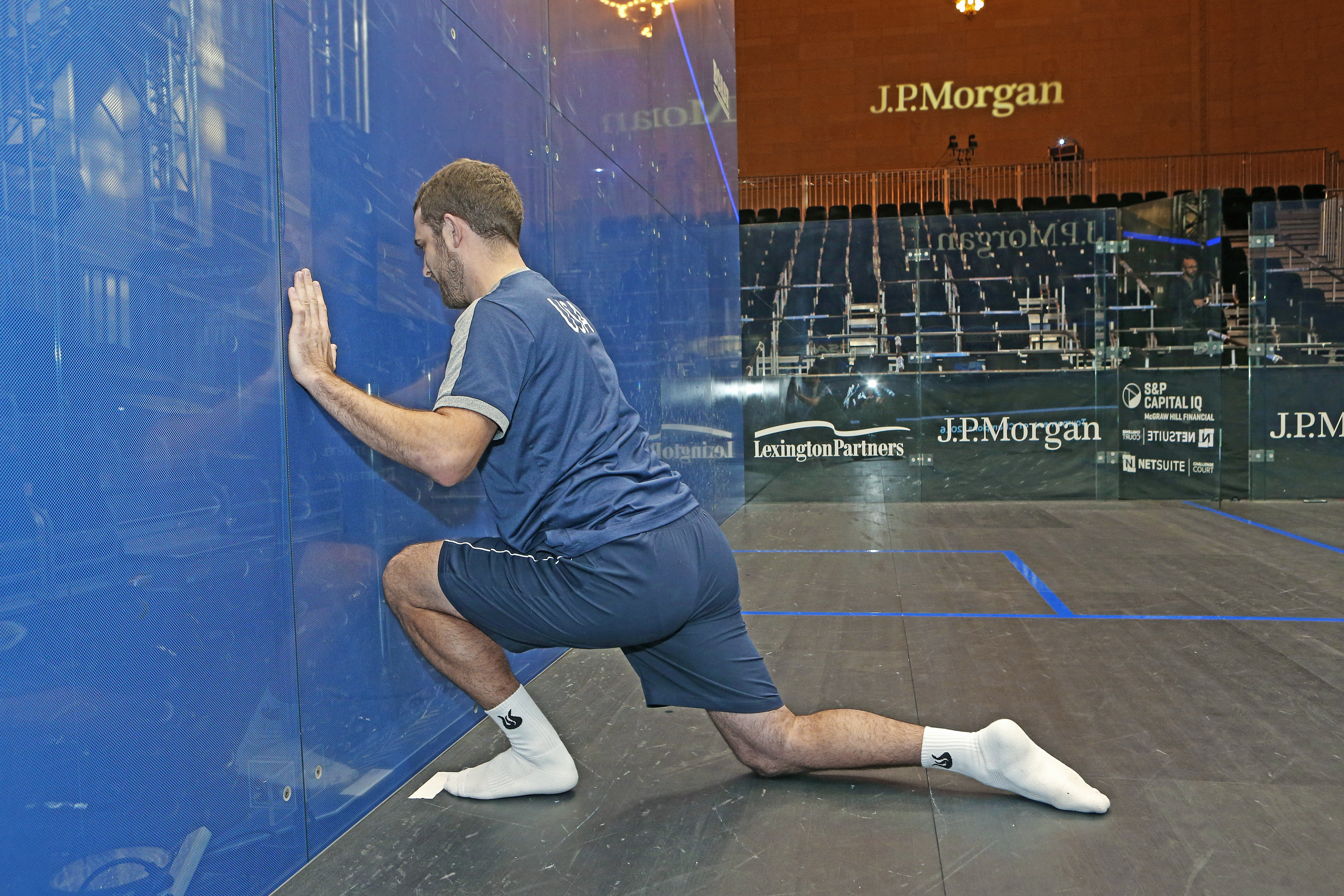By Jeremy Mayer, US Squash National Team Sports Physiologist
The Achilles tendon represents the conjoined tendons of the gastrocnemius and soleus muscles. It is the strongest tendon in the human body, made up of “strands” of fiber-like proteins called collagen. When the Achilles is compromised, these collagen fibers can become ruptured. This is normally a result of a strong contraction of the calf that stretches it to the point of tearing. In squash there is a tremendous amount of stress placed on this tendon when pushing off of the foot to track a ball down or coming out of a lunge position.
Other factors that contribute to injury are:
- Lack of proper flexibility in the ankle and calf muscles
- Lack of strength in calf, hamstring, adductor and gluteal muscles
- Increasing training intensity too quickly
- Changing footwear
- Previous injury history
Two most common injuries to the Achilles are:
Paratenonitis – Inflammation of the covering or “sheath” of the tendon. When this occurs it can become excessively swollen and painful while not allowing for proper gliding of the fibers within.
Tendonosis – Caused by repeated trauma that causes a degenerative, non-inflammatory response in the tendon. If not rested properly further degeneration and improper healing take place leading to dysfunction.
Prevention of these injuries starts with a quick test of ankle flexibility (dorsiflexion)
(Tools: A flat wall and ruler or tape measure)

Assume a kneeling position in front of a wall with one leg out in front similar to a hip flexor stretch. The lead toes are lined up 5 inches from the wall. Place your hands against the wall out in front of you and lean forward trying to touch the lead knee to the wall. Don’t let your heel come up off the ground.
Switch legs and follow the same protocol. If you are able to touch both knees from this distance you have proper dorsiflexion. If not continue to move forward one inch each round until the knee touches without the heel coming up.
Poor (highest risk of injury) = 1-3 inches
Moderate = 3-4 inches
Good (lowest risk) = 5 or more inches
Active Stretching and Strengthening Techniques
Stretches
The goal is to increase dynamic range of motion to better prepare your Achilles for sports related movements. This is achieved most effectively through active stretching. You will hold each stretch for no longer than 2 seconds through a set of 10 repetitions daily. Below are a few stretches to try:
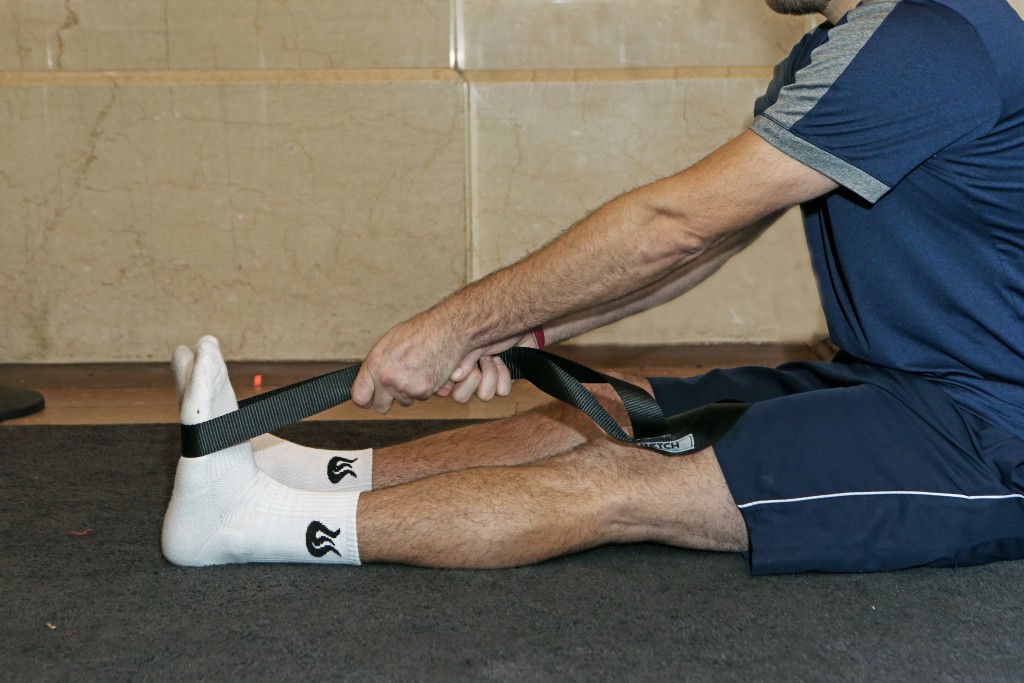
Gastrocnemius Stretch – seated with leg straight pull toes in towards you using towel or strap.
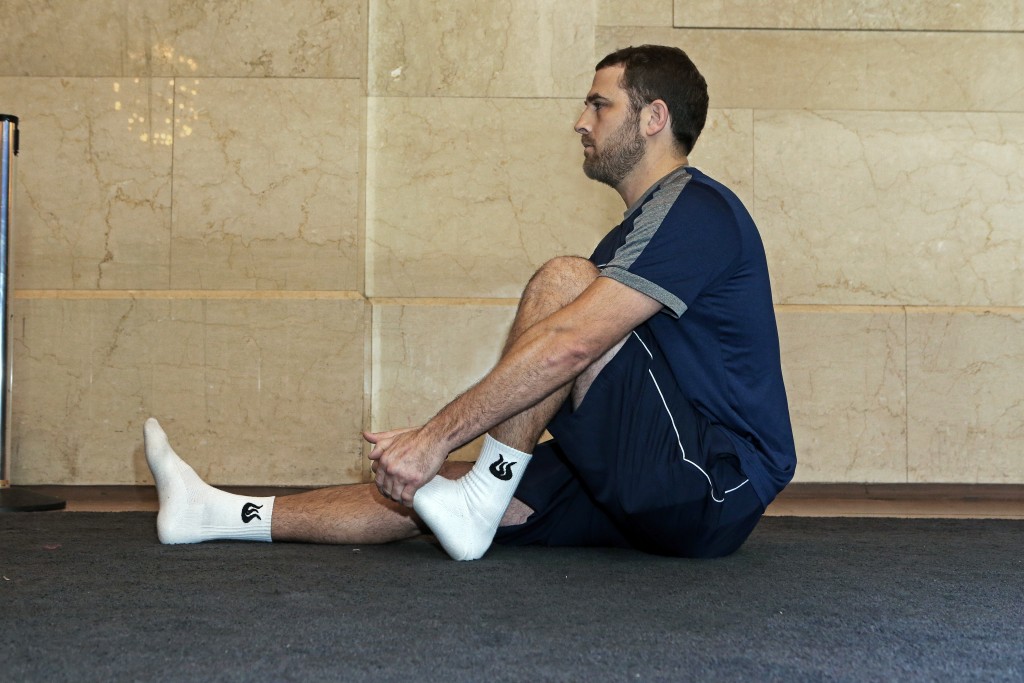
Soleus Stretch – seated with knee bent pull toes up towards you using hands.
Hamstring Stretch – lying on back bring straight leg up while assisting with towel or strap.
Exercises
Strengthening of the lower leg is an important component to preventing Achilles injury. Many of the small muscles throughout your lower leg, foot and ankle become shut down over time. By performing isolated strengthening exercises you are able to “wake-up” these muscles allowing them to return to proper function. Perform 2 sets of 15 repetitions for each exercise daily.
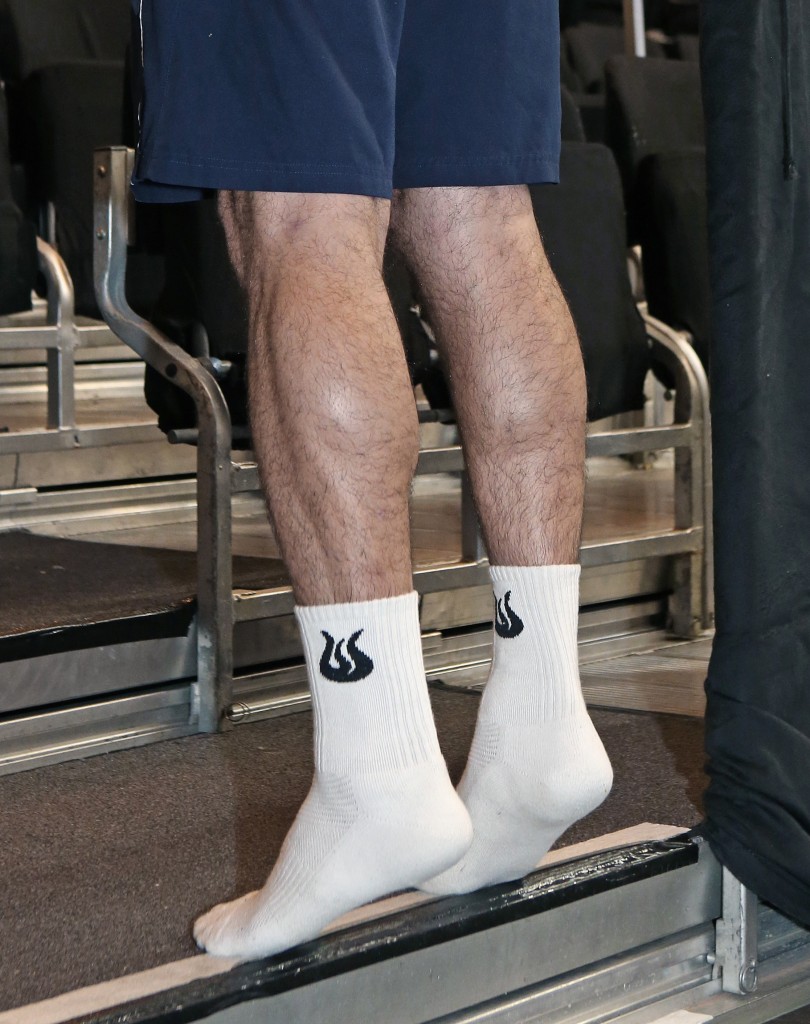
Gastrocnemius Exercise – standing calf raise on step. Focus on the eccentric (down) portion of the movement
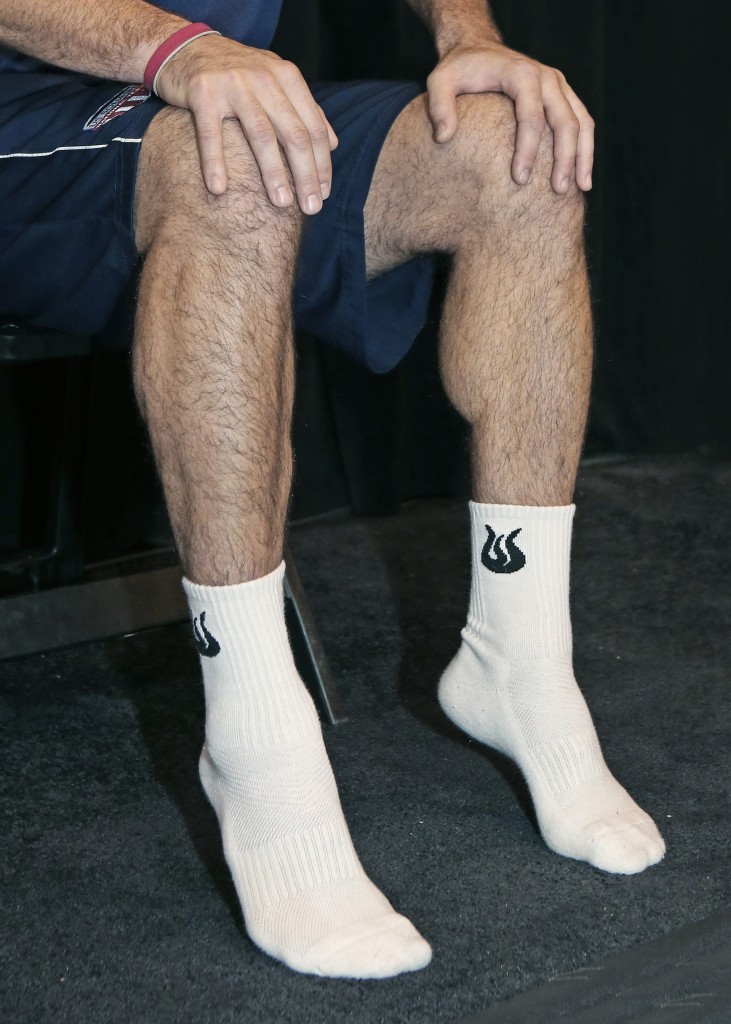
Soleus Exercise – seated calf raise with foot on block using hands for resistance.
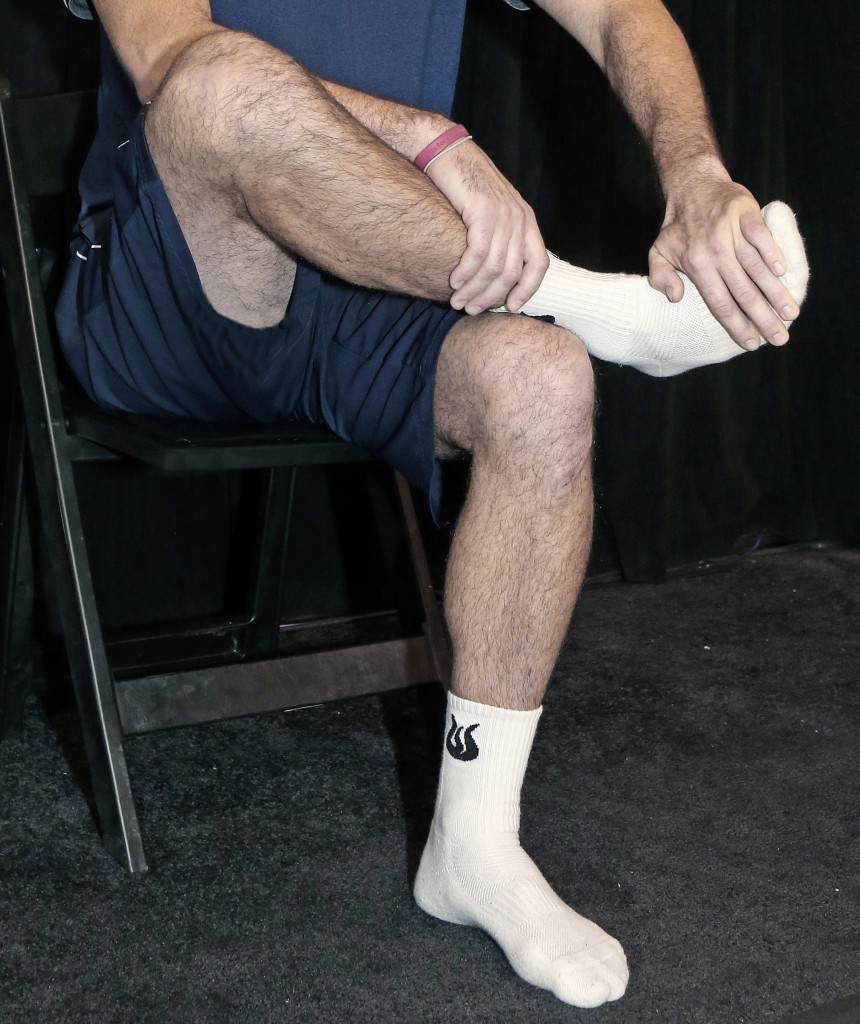
Tibialis Anterior – Seated with leg crossed over the other using hand for resistance.
The key to preventing Achilles injury along with many others is to maintain a good sense of balance throughout the body. If an area feels tight or weak specifically address it before it leads to an overcompensation, accumulation of stress and then injury.


